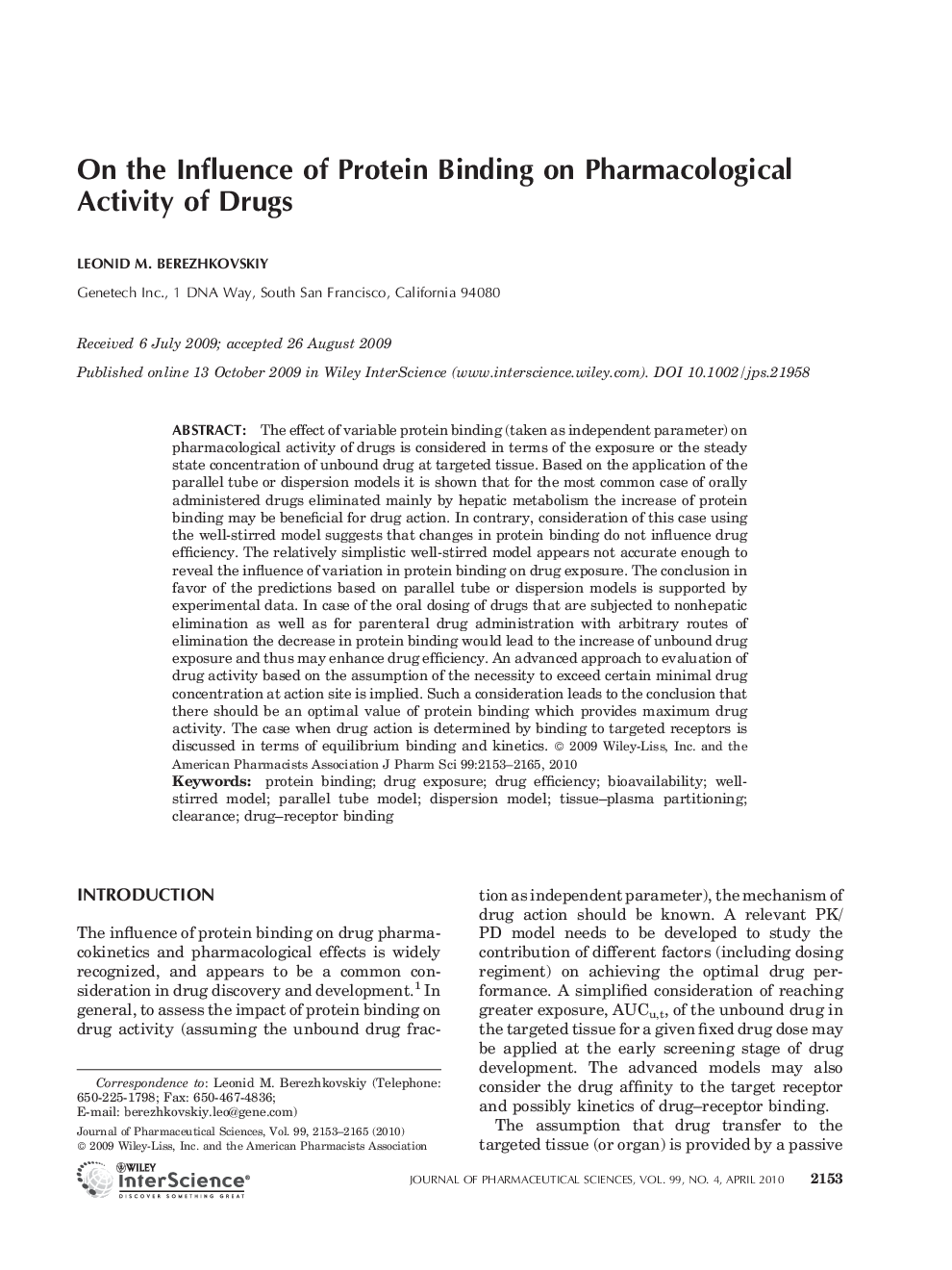| Article ID | Journal | Published Year | Pages | File Type |
|---|---|---|---|---|
| 2485128 | Journal of Pharmaceutical Sciences | 2010 | 13 Pages |
Abstract
The effect of variable protein binding (taken as independent parameter) on pharmacological activity of drugs is considered in terms of the exposure or the steady state concentration of unbound drug at targeted tissue. Based on the application of the parallel tube or dispersion models it is shown that for the most common case of orally administered drugs eliminated mainly by hepatic metabolism the increase of protein binding may be beneficial for drug action. In contrary, consideration of this case using the wellâstirred model suggests that changes in protein binding do not influence drug efficiency. The relatively simplistic wellâstirred model appears not accurate enough to reveal the influence of variation in protein binding on drug exposure. The conclusion in favor of the predictions based on parallel tube or dispersion models is supported by experimental data. In case of the oral dosing of drugs that are subjected to nonhepatic elimination as well as for parenteral drug administration with arbitrary routes of elimination the decrease in protein binding would lead to the increase of unbound drug exposure and thus may enhance drug efficiency. An advanced approach to evaluation of drug activity based on the assumption of the necessity to exceed certain minimal drug concentration at action site is implied. Such a consideration leads to the conclusion that there should be an optimal value of protein binding which provides maximum drug activity. The case when drug action is determined by binding to targeted receptors is discussed in terms of equilibrium binding and kinetics. © 2009 WileyâLiss, Inc. and the American Pharmacists Association J Pharm Sci 99: 2153-2165, 2010
Keywords
Related Topics
Health Sciences
Pharmacology, Toxicology and Pharmaceutical Science
Drug Discovery
Authors
Leonid M. Berezhkovskiy,
